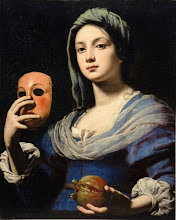It is a matter not requiring any proof that the object and the subject whose respective spheres are the notion of the 'Thou' (the Non-Ego) and the 'Ego,' and which are opposed to each other as much as darkness and light are, cannot be identified. All the less can their respective attributes be identified. Hence it follows that it is wrong to superimpose upon the subject - whose Self is intelligence, and which has for its sphere the notion of the Ego - the object whose sphere is the notion of the Non-Ego, and the attributes of the object, and vice versa to superimpose the subject and the attributes of the subject on the object. In spite of this it is on the part of man a natural procedure - which has its cause in wrong knowledge - not to distinguish the two entities (object and subject) and their respective attributes, although they are absolutely distinct, but to superimpose upon each the characteristic nature and the attributes of the other, and thus, coupling the Real and the Unreal, to make use of expressions such as 'That am I,' 'That is mine.' - But what have we to understand by the term 'superimposition?' - The apparent presentation, in the form of remembrance, to consciousness of something previously observed, in some other thing.
Shri Adi Sankaracharya,
Introduction to the Brahma Sutras
Ādi Śankarācārya ("the first Shankara in his lineage") was the first philosopher to consolidate the doctrine of Advaita Vedanta, a sub-school of Vedanta. His teachings are based on the unity of the soul and Brahman, in which Brahman is viewed as without attributes. In the Smārta tradition, Adi Shankara is regarded as an incarnation of Shiva. There is debate over the date of his birth; some place it as early as the 9th century CE.




















No comments:
Post a Comment